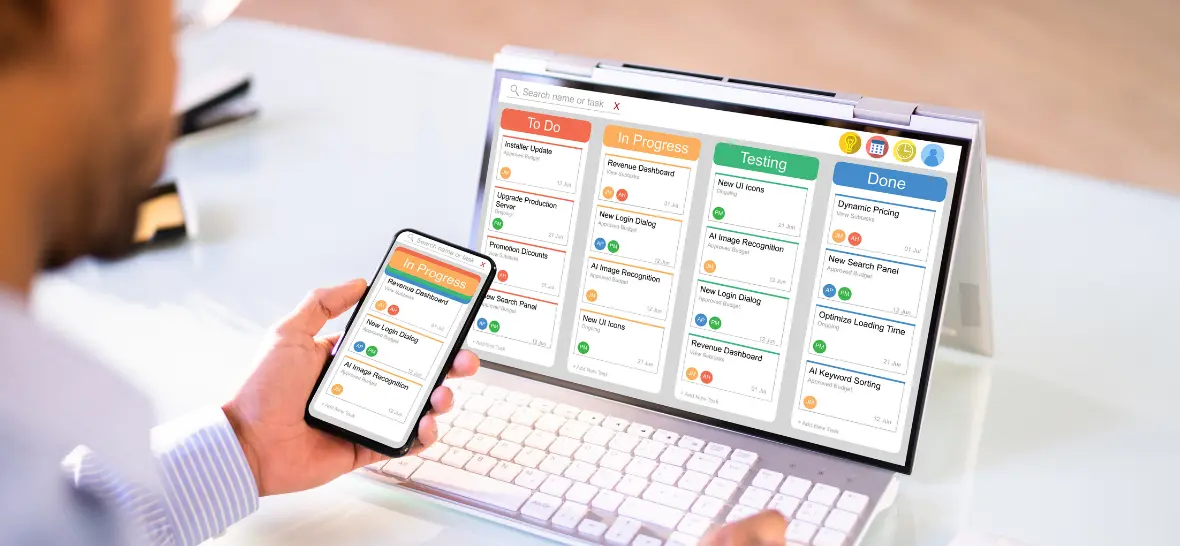Cloud testing ensures applications work as intended. It also ensures the applications leverage cloud benefits such as flexibility and scalability. But cloud testing poses some unique challenges compared to standard testing.
The Challenge of Complex Cloud Configurations
Traditional on-premises environments have predictable hardware and software settings. The system admins enforce tight control over the settings, which remain consistent most of the time.
The cloud environment, on the other hand, spots diverse and complex configurations. Different environments have different network configurations, operating systems and data centre architectures. Multiple interconnected components are the norm.
And these configurations change by the day.
When an application encounters such variable environments, it may behave in unanticipated ways.
Testers have their tasks cut out to prepare test cases that cover all the diverse storage, server, and network configurations. The testing spectrum must also expand to cover multiple mobile, browser, and operating systems.
Off-the-shelf cloud testing solutions rarely support all configurations. For most medium to large setups, developing custom test cases is the way to go.
Generating test cases, however, becomes costly and time-consuming in a complex environment. The delays in testing may even risk the product becoming unviable. The testing environment may also fall out of sync with the production environment quickly. Isolating issues to unearth the root causes of failures becomes difficult.
To overcome these challenges:
- Prioritise test cases based on the maximum potential impact. The prioritisation can be on business value, risk of failure, or any other relevant factor.
- Establish and track key performance indicators (KPIs) for testing. Some popular KPIs include response times, latency, mean time to repair, test cycle time, and cost per test.
- Review the cloud environment regularly. Adjust or update the testing strategies to keep the test environments up to date.
- Invest in automation to accelerate the testing process. Automated tools and frameworks simulate load, stress, and scalability scenarios. These simulations analyse application performance in diverse cloud environments. AI-powered automation tools such as Tricentis Tosca optimise and accelerate end-to-end testing.
Many enterprises launch a minimum viable product (MVP) to cope with time pressures. Such products may be rife with bugs. The enterprise hopes to fix those bugs later, through updates. But the potential security risks and the degraded customer experience make such an approach very risky, and best avoided. Rather, adopt an iterative development process and co-opt testing as part of the development process.
Integration Challenges
Most enterprises adopt a mix of public, private, and hybrid clouds. Many-a-times, they also engage with multiple cloud providers. A big ecosystem limitation is the lack of standard solutions to integrate the public cloud with enterprise data centres. This surfaces interoperability issues. The presence of multiple devices and multiple providers compounds the interoperability challenge.
As solutions:
- Use DevOps to connect the testing infrastructure to the enterprise environment. Integrate tests into the CI/CD pipelines.
- Leverage APIs to build custom integrations. Dedicated cloud integration platforms do away with the complexities of API interactions. But these may not be an option for high customisation and scalability requirements.
- Use Infrastructure as Code (IaC) to define and manage resources across different providers.
- Use virtualisation and containers. Container orchestration platforms such as Kubernetes pack all the elements to run tests. It offers isolated and scalable environments to simulate various configurations. The ability to reuse components and eliminate physical hardware saves costs.
The Dependence on Connectivity
One underestimated challenge of cloud testing is connectivity. The efficacy of cloud testing depends on continuous internet access. Disrupted connectivity or slow speeds leads to breaks or incomplete tests, and false results. Bandwidth limitations skew performance test results, leading to inaccurate assessments of applications responsiveness.
As the first step, use performance monitoring tools to measure the impact of bandwidth limitations.
Next, apply cloud-testing strategies that mitigate the impact of bandwidth limitations.
- Use traffic shaping tools to simulate different network conditions, including varying bandwidth levels. These tools pinpoint performance bottlenecks that might appear under constrained network environments.
- Optimise the testing data using caching or compression, to reduce test data size. Such a strategy minimises the traffic and enables seamless testing in constrained bandwidth.
- Distribute test workloads across multiple geographical locations. This reduces the impact of localised network congestion.
- Optimise the network protocols. For instance, HTTP/2 or QUIC delivers superior performance and efficiency over traditional TCP.
Security Challenges
For comprehensive testing, the use of sensitive or production data becomes expedient. But storing and processing such sensitive data outside the network perimeter comes with the risk of breaches or leaks. Many cloud services are multi-tenant, and store data from multiple clients on a single server, adding to the risks. Many vendors do not apply reliable encryption and data protection techniques.

As solutions:
- Use virtualisation to create isolated testing environments. Isolated VMs prevent sharing the testing data with the production environments.
- Apply data masking. Replace sensitive data with random or synthetic values. Still better, use test data generators to create realistic synthetic data sets.
- Apply data subsetting, or creating small, representative subsets of production data for testing.
- Double-check the integrity of the security deployments. Check the strength of the encryption of the data in transit and data at rest. Put in place role-based access control to ringfence sensitive data.
- Delete test data regularly. Use data purging tools to make such data non-recoverable.
- Ensure compliance with applicable standards such as GDPR, CCPA, COC2, SOX, HIPAA, and PCI DSS.
- Pay attention to the terms and conditions of any vendors involved in the mix. Have clarity on conditions related to data integrity, data preservation and transfer.
The Risk of Runaway Costs
Cost-effectiveness is a key USP of the cloud. But cloud costs can quickly go out of control. Many enterprises have suffered serious financial damage and even gone bankrupt because they could not control their cloud costs.
Cloud testing requires dedicated infrastructure, with scalability. It is also vital that testing environments have scalability. But the sheer volumes of configurations means tests often consume more resources than expected.
There is also the risk of hidden costs, such as data transfer costs, encryption costs, license fees and so on. Many enterprises also underestimate the cost to acquire talent with the right skills and expertise.
As solutions:
- Plan the test environments thoroughly to avoid hidden or unexpected costs. Consider all costs.
- Monitor the test environment continuously to track deviations. Native cloud provider tools such as Amazon CloudWatch or Google Cloud Monitoring offer handy metrics. Users can track these metrics through intuitive dashboards. Any number of third-party tools offer advanced and customisable features. These tools also integrate with multiple providers and provide granular monitoring capabilities.
- Make sure any resource does not run longer than needed. Forgetting to shut down a resource after the test is over can become costly.
- Use cloud cost governance tools to put in place spending limits. These tools can also track usage vis-a-vis budgets, and block unauthorised resource consumption. Service provider tools, such as AWS Cost Explorer or Google Cloud Cost Management also serve the purpose well.
- Use tags and labels to categorise and track resources. Analysing tags and labels makes it easy to identify and optimise or eliminate underutilised resources.
Most enterprises do not have the expertise to build test cases in the cloud or apply the above best practices and strategies. Platforms such as Tricentis offer comprehensive cloud testing solutions. Tricentis leverage the power of AI to generate powerful and smart tests that cover all bases and enable faster releases.












